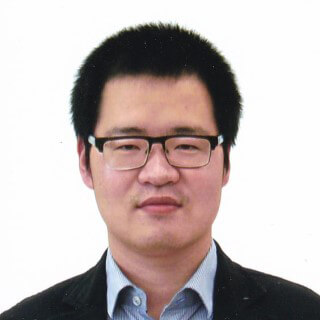Blood Flow and Oxygen Delivery in the Back of the Eye

About the Research Project
Program
Award Type
Postdoctoral Fellowship
Award Amount
$149,586
Active Dates
July 01, 2021 - June 30, 2023
Grant ID
G2021003F
Mentor(s)
Ian Sigal, PhD, University of Pittsburgh
Goals
To understand how elevated eye pressure alters the hemodynamic environment in the optic nerve head, specifically in the lamina cribrosa (LC), where retinal ganglion cell axon damage initiates in glaucoma. In this project, we will pursue the following specific aims. In aim 1, we will use a customized microscopy system to characterize how intraocular pressure deforms the vessels in the back of the eye, specifically in the LC. In aim 2, we will develop eye-specific numerical models to determine the mechanical properties of the lamina vessels, collagen, and neural tissues. In aim 3, we will perform a systematic study to determine how morphometric, hemodynamic, and biomechanical factors influence the blood flow and oxygen concentration in the lamina.
Summary
Vision loss in glaucoma is due to the loss of retinal ganglion cell axons that transmit visual information from the eye to the brain. Axon loss starts in a region of the back of the eye known as the lamina cribrosa. Elevated intraocular pressure is a major risk factor for glaucoma, and the only treatable one. However, the link between elevated pressure and glaucoma is not firmly established. One of the leading hypotheses postulates elevated intraocular pressure deforms the microvessels that supply blood to the lamina region. Distortion of these vessels then affects the blood perfusion, compromising the nutritional and oxygen support to the axons, which eventually results in axon loss. Unfortunately, the difficulty of doing direct experiments of lamina vasculature has prevented testing the hypothesis. To overcome these challenges we have developed unique imaging and modeling techniques, which we will leverage in this study to test the hypothesis through the following three specific aims: 1) measure how intraocular pressure deforms the lamina vessels; 2) use advanced numerical models to determine the mechanical properties of the lamina vessels, collagen and neural tissues, including axons; 3) identify the key factors influencing blood flow and oxygen concentration in the lamina. Our long-term goal is to understand the mechanisms of axon death in glaucoma, and help develop novel diagnostic and therapeutic agents for the clinical treatment of glaucoma.
Unique and Innovative
Our project is innovative in three aspects.
- We will provide details of intraocular pressure-induced vessel deformations in the lamina, which is critical to understand vascular dysfunction in the pathogenesis of glaucoma.
- We will obtain the mechanical properties of vessels, collagen, and neural tissues in the lamina, which is essential to evaluate the LC resilience to elevated intraocular pressure.
- We will identify the main factors driving blood flow and oxygen concentration in the LC, which can be clinically useful in glaucoma management, diagnosis, and risk profiling.
Foreseeable Benefits
At completion, the project will represent the most detailed characterization of lamina cribrosa microvasculature and blood flow, and will point to the specific factors driving blood perfusion and oxygen distribution in the lamina cribrosa. These will serve as targets of future studies, first in basic research to verify models and validate predictions, and later clinically to help prevent and manage the disease.
Grants
Related Grants
National Glaucoma Research
Saving Sight: A Journey to Healing Without Scars
Active Dates
July 01, 2024 - June 30, 2026

Principal Investigator
Jennifer Fan Gaskin, FRANZCO
Saving Sight: A Journey to Healing Without Scars
Active Dates
July 01, 2024 - June 30, 2026

Principal Investigator
Jennifer Fan Gaskin, FRANZCO
National Glaucoma Research
Retinal Ganglion Cell Axon Degeneration in a 3D Microfluidic Hydrogel Model
Active Dates
July 01, 2024 - June 30, 2026

Principal Investigator
Shruti Patil, PhD
Retinal Ganglion Cell Axon Degeneration in a 3D Microfluidic Hydrogel Model
Active Dates
July 01, 2024 - June 30, 2026

Principal Investigator
Shruti Patil, PhD
National Glaucoma Research
Harnessing Artificial Intelligence to Improve Glaucoma Clinical Trials
Active Dates
July 01, 2023 - June 30, 2025

Principal Investigator
Jithin Yohannan, MD, MPH
Harnessing Artificial Intelligence to Improve Glaucoma Clinical Trials
Active Dates
July 01, 2023 - June 30, 2025

Principal Investigator
Jithin Yohannan, MD, MPH



